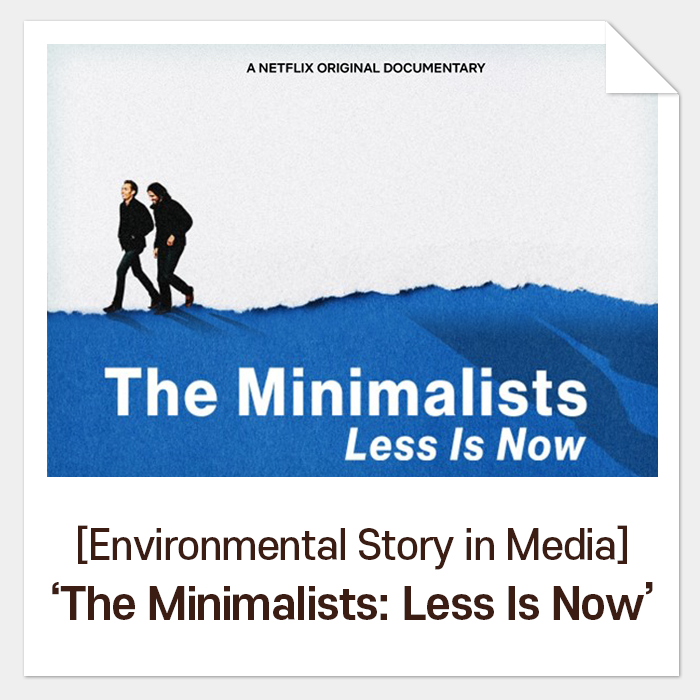Resource Circulation Day, Our Resources to Preserve by Comprehensive Management System!
The Ministry of
Environment and Korea Waste Association established Resource Circulation Day on
September 6th to remind the importance of limited resources and to think
of solutions for resource waste. Greeting the 13th Resource Circulation Day
this year, we would like to check the current system for resource circulation
and necessary changes for it to be expanded and developed.
Disappearing
resource due to continuous development
Generally speaking, resource refers to natural resources that are generated from nature. They are categorized into two different groups; renewable resources such as forests, water, wind, solar energy that are repeatedly produced over time, and non-renewable resources such as minerals and fossils fuels that do not exist anymore once they are used up.
Going through 4
times of industrial revolution, humans are now facing an ICT merging generation
after the era of mechanization and mass production. In the meantime, the innovative
manufacturing process has been continuously updated and affected the human
lifestyle greatly. However, it increased not only the scale of production and
consumption but also the scope of resource development, which results in
resource depletion.
Current
resource circulation system focusing on reducing and reusing
As resource
depletion and relevant environmental issues have risen these days, Governments
and companies are holding various campaigns and projects for Resource
Circulation Day. During September, they have celebrated the day by
sharing how to minimize the waste on SNS, promoting the use of reusable
containers, and donating upcycled stools and benches.
 |
| Campaigns for the Resource Circulation Day by local governments in Korea |
However, researchers insist that the improvement of structural problems of the resource circulation should be advanced. They said that it is most important to establish a proper system for a circular economy first, not a linear economy where the resources are merely taken, produced, and disposed of. Our government also announced a ‘Plastic-free’ plan to reduce plastic waste by 20% and to increase the recycling rate to 70% from the current figure of 54% by the year 2025. Then, what kinds of changes are needed for our system to achieve practical resource circulation?
1) Segmented
standards for materials and unification
Plastics that are most frequently used for packaging include PE, PS, PP, and many various materials but they are collectively recovered as ‘plastic’. Similarly, there are no separate sorting standards for different kinds of papers such as printing paper and plastic-lined paper for food packaging. It is difficult to recycle composite materials that most of them are incinerated or buried in landfills. Therefore, there should be a firm system to sort and dispose of each material as well as legislations for material unification to improve the material recycling rate.
2) Verification
system for environment-friendly properties under international standards
 |
| rePAPER's global environment-friendly certificates |
Many companies have been developing and introducing eco-friendly products that are supposed to be easily recyclable or compostable. However, some of their environmental claims are based on different standards and there are many greenwashing products with colors or the addition of a small amount of biomass to confuse customers. We should have stringent standards for resource circulation and select a product that is practically sustainable by current recycling or composting facilities by applying internationally accepted tests.
3) Establishment the integrated system for resource circulation for circular economy

 |
| Reduce unnecessary double packing(left), use environment-friendly buffer(right) |
During Chuseok,
one of the biggest holidays in Korea, the packaging issue gets a lot of attention
as more than enough materials are used, for sizes and appearance are valued.
According to an expert in the field, the average amount of recyclable waste per
day increases from 50 tons to 80 tons during a week before the national holidays. Recently,
however, relevant companies started to seek the solution as the customers’
awareness and needs arouse towards environmentally friendly packaging.
Growth of the
environment-friendly market and changes in packaging
Many governments
and companies in the world try various ways to switch to a sustainable society.
They include the introduction of EPR(Extended Producer’s Responsibility) which
emphasizes the responsibility of a producer for collecting and recycling and make
improvements for separate waste collection.
 |
| source: https://www.simplegermany.com/pfand-germany/ |
Especially,
Germany sets a good example of the integrated management for resource
circulation. Pfand, the deposit-refund system in Germany, was introduced to
promote the recovery and reuse of bottles in 1985. As the return and refund
system is convenient and the deposit fee is pretty high, it motivates
customers to return the empty bottles better and helps companies to recover
recyclable materials more easily.
In Korea, some major distributors such as Coupang or SSG.Com introduced reusable insulation bags for fresh products instead of Styrofoam and Amorepacific, a beauty and cosmetic conglomerate installed a ‘refill station’ to reduce the materials used to make a bottle. North Face Korea utilizes the recycled fabrics made from the collected PET from Jeju Island for their clothing and shoes while Lotte Chilsung Beverage gave their vendors a collecting bin for transparent PET bottles.
Resource
circulation made by everyone’s sense of responsibility and active participation
The switch to a
genuine resource circulation system requires structure reorganization and cooperation
from every subject in the life cycle. The Government should play an active role
and establish detailed legislations for the entire resource circulation system
and companies need to develop products that meet global environmentally
friendly standards and work on the investment for application and recovery as
well. Consumers should be able to move the Government and companies with
continuous interest and participation.






Comments
Post a Comment